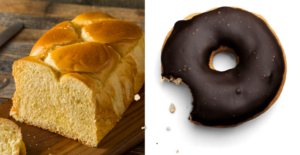What Is Pasta Flour And How Can You Use It?
What To Know
- Pasta flour, also known as semolina flour, is a special type of wheat flour specifically designed for making pasta.
- Pasta made with pasta flour has a firmer texture than pasta made with all-purpose flour.
- Pasta flour can be used for bread making, but it will result in a denser bread with a chewier texture.
Pasta flour, also known as semolina flour, is a special type of wheat flour specifically designed for making pasta. It is made from durum wheat, a hard wheat variety known for its high protein content and amber color. The milling process of durum wheat results in a coarse, granular flour with a unique texture and flavor profile.
Key Characteristics of Pasta Flour
- High Protein Content: Pasta flour contains a higher protein content than all-purpose flour, typically ranging from 13% to 14%. This protein forms a strong gluten network when mixed with water, which gives pasta its characteristic firmness and elasticity.
- Coarse Texture: Compared to all-purpose flour, pasta flour has a coarser texture due to its larger particle size. This texture helps create a rougher surface on the pasta, allowing sauces to adhere better.
- Amber Color: The amber color of pasta flour comes from the pigments in durum wheat. This color is imparted to the pasta, giving it a slightly golden hue.
Types of Pasta Flour
There are two main types of pasta flour:
- Type 00: The finest and most refined type of pasta flour, Type 00 is used for making delicate pasta varieties such as angel hair and fettuccine.
- Type 0: A slightly coarser flour than Type 00, Type 0 is often used for making thicker pasta shapes like penne and lasagna sheets.
Benefits of Using Pasta Flour for Pasta
- Superior Texture: Pasta made with pasta flour has a firmer texture than pasta made with all-purpose flour. This firmness prevents the pasta from becoming mushy and allows it to hold its shape better during cooking.
- Improved Flavor: Pasta flour imparts a slightly nutty and earthy flavor to pasta. This flavor complements the sauces and seasonings used in pasta dishes.
- Better Sauce Adhesion: The coarse texture of pasta flour creates a rougher surface on the pasta, which allows sauces to adhere better. This results in a more flavorful and satisfying pasta dish.
How to Use Pasta Flour
To make pasta with pasta flour, follow these steps:
1. Measure the flour: Use a kitchen scale to accurately measure the amount of pasta flour required.
2. Create a well: Make a well in the center of the flour on a clean surface.
3. Add water: Gradually add water to the well, stirring constantly.
4. Knead the dough: Once the dough comes together, turn it out onto a lightly floured surface and knead for 5-7 minutes until smooth and elastic.
5. Rest the dough: Wrap the dough in plastic wrap and let it rest for at least 30 minutes. This allows the gluten to relax, making the dough easier to work with.
6. Roll out the dough: Roll out the dough into thin sheets using a pasta machine or a rolling pin.
7. Cut the pasta: Cut the dough into desired pasta shapes using a pasta cutter or a knife.
8. Cook the pasta: Cook the pasta in boiling salted water according to the package instructions.
Pasta Flour vs. All-Purpose Flour
| Feature | Pasta Flour | All-Purpose Flour |
| — | — | — |
| Protein content | High (13-14%) | Medium (10-11%) |
| Texture | Coarse | Fine |
| Color | Amber | White |
| Gluten strength | Strong | Moderate |
| Use | Making pasta | Baking, bread making, etc. |
Can You Substitute Pasta Flour with All-Purpose Flour?
While it is possible to substitute pasta flour with all-purpose flour, it is not recommended. Pasta made with all-purpose flour will have a softer texture and may become mushy during cooking. It may also not hold sauces as well.
Answers to Your Questions
- What is the difference between semolina flour and pasta flour?
Semolina flour is a type of pasta flour made from durum wheat. It is the coarsest type of pasta flour and is often used for making traditional Italian pasta.
- Can I use pasta flour for bread making?
Pasta flour can be used for bread making, but it will result in a denser bread with a chewier texture. It is recommended to use bread flour or all-purpose flour for optimal bread-making results.
- How do I store pasta flour?
Pasta flour should be stored in an airtight container in a cool, dry place. It can be stored for up to 6 months.
- Is pasta flour gluten-free?
No, pasta flour is not gluten-free. It is made from wheat, which contains gluten.
- Can I use pasta flour for making pizza dough?
Yes, pasta flour can be used for making pizza dough. It will result in a crispier crust with a slightly chewy texture.
